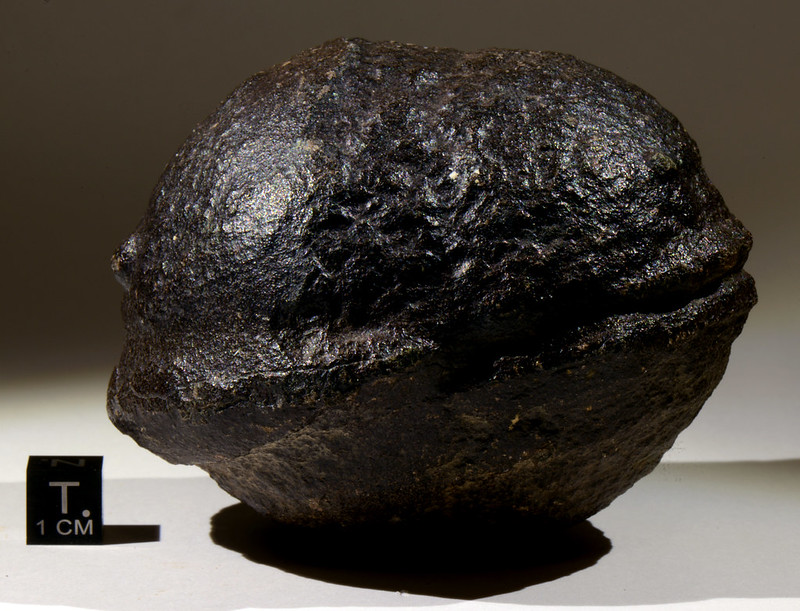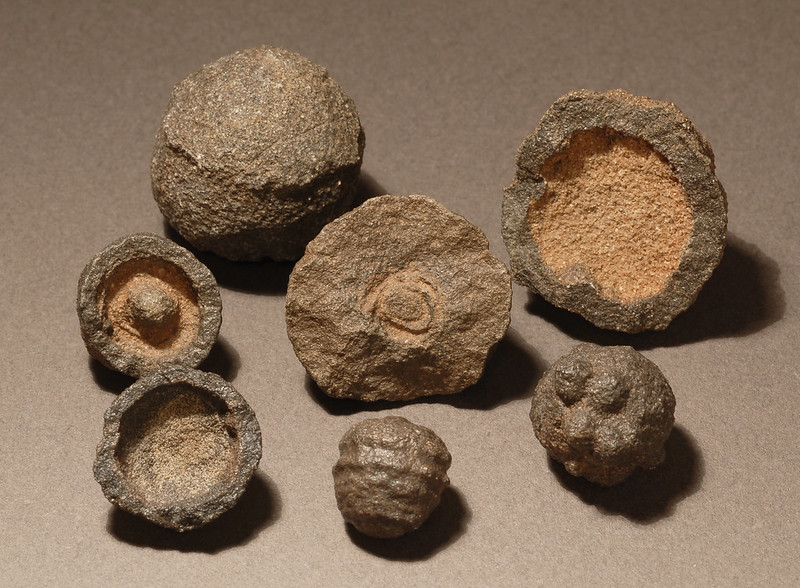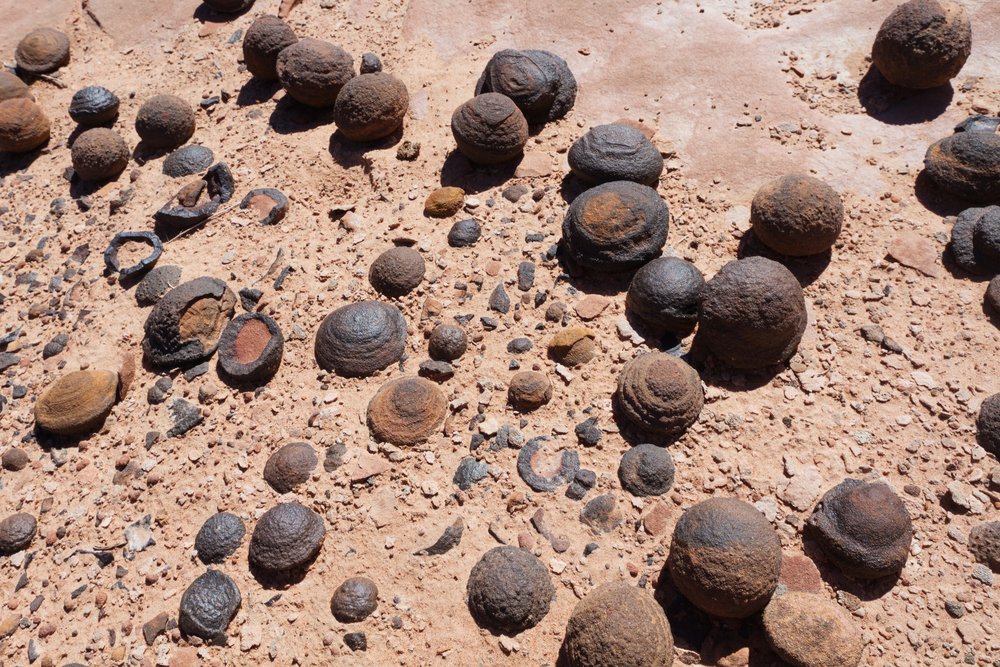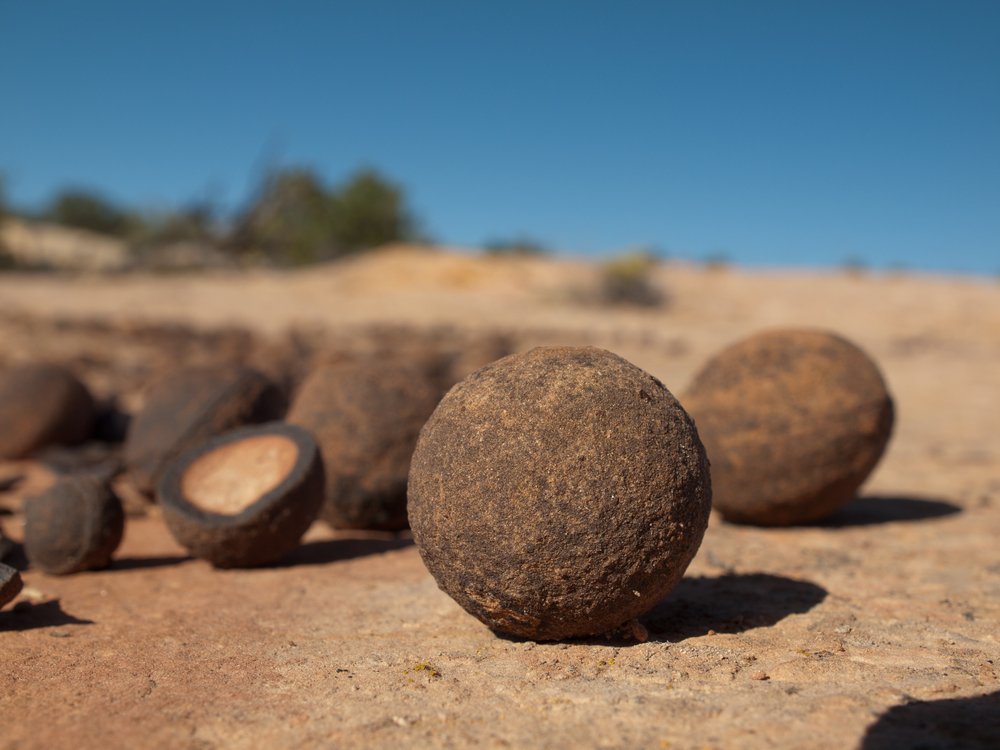They range from the size of marbles to larger than a person’s fist. And depending who you’re talking to, these aren’t actually rocks. Instead, they’re actually an iron oxide concretion that is wrapped around a sandstone core!


What’s This Rock?
What’s Pictured above are Moqui Marbles, and they’re of the stranger and more unique bits of material you’ll run across as a rock and mineral collector. They’re not quite rocks, but their uniform shape and sandstone interior have mystified people for years. Fortunately, the truth isn’t nearly as complicated as you’d think but they’re still quite mysterious!
More About Moqui Marbles
The term “Moqui Marbles” refers to the unique ironstone concretions that have weathered out of the lower Navajo Sandstone Formation in southern

Interestingly, the origin of these Moqui Marbles has been the subject of scientific debate. Recent published research has demonstrated that the ironstone concretions actually formed around 25 million years ago, during the Late Oligocene epoch. This is in stark contrast to the much older depositional age of the host Navajo Sandstone, which dates back to the late Triassic and early Jurassic periods.
The formation of the Moqui Marbles is attributed to chemical reactions that occurred as groundwater moved through the highly porous and permeable Navajo Sandstone. The constant flow of water triggered the precipitation and cementation of the iron and manganese minerals into these unique spherical and irregular shapes.

Over time, as the softer sandstone matrix weathered away, the harder concretions were left behind, accumulating on the surface in piles and layers. This preferential weathering process is what makes the Moqui Marbles so visually striking compared to the surrounding rock.
Interestingly, these Earth-bound Moqui Marbles have drawn comparisons to the “blueberry” concretions discovered by the Opportunity rover on the surface of Mars. Both formations provide valuable insights into the geological processes that can shape the surfaces of planets and moons.
While not as dramatic as some other geological wonders, the Moqui Marbles offer a fascinating glimpse into the complex interplay between water, minerals, and erosion that has sculpted the landscapes of our planet over millions of years.

